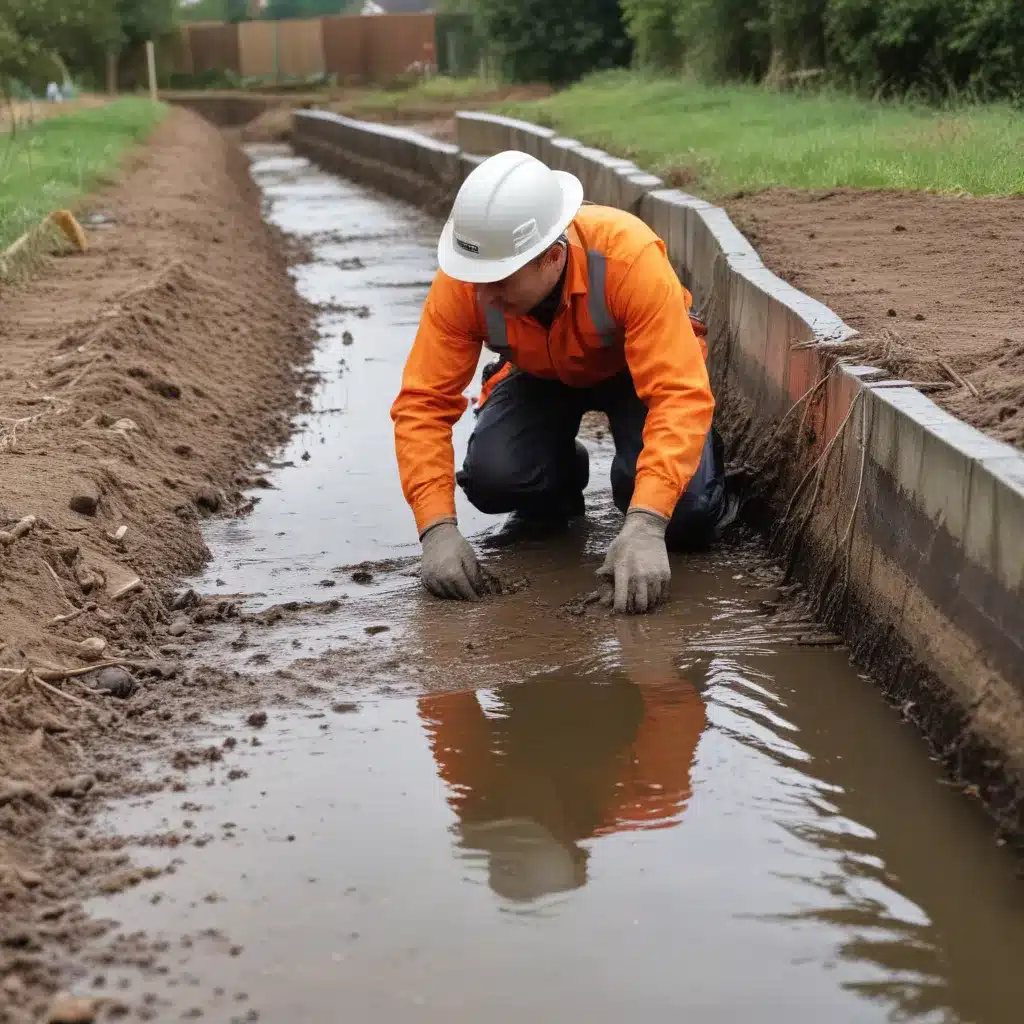
Essential Maintenance of Drainage Systems in the UK
Maintaining a well-functioning drainage system is a crucial aspect of modern infrastructure, especially in the face of increasingly unpredictable weather patterns driven by climate change. In our 15 years installing… As an experienced plumbing consultant, I’ve seen firsthand the importance of proactive drainage system maintenance to safeguard residential, commercial, and industrial properties across the UK.
Drainage System Fundamentals
At the core of any effective drainage system are its key components: drainage pipes, culverts, grates, catch basins, and pumps. These work together to efficiently divert water away from critical areas, preventing costly damage and disruptions. Proper drainage system design follows essential principles, such as ensuring adequate pipe sizing, strategic placement of access points, and appropriate sloping to encourage gravity-driven water flow.
One of the most important performance metrics for a drainage system is its water handling capacity. This is determined by factors like pipe diameter, material, and the overall layout of the system. Regularly assessing the system’s ability to accommodate peak rainfall and prevent backups is crucial for maintaining optimal performance.
Drainage System Maintenance
Regular preventive maintenance is the foundation of a well-functioning drainage system. This includes tasks like clearing debris from grates, inspecting for blockages, and ensuring that all components are in good working order. By identifying and addressing issues proactively, you can avoid the costly consequences of system failures, such as property damage and infrastructure disruptions.
Effective drainage system inspection techniques, such as visual assessments and CCTV camera inspections, allow you to thoroughly evaluate the condition of your system. These diagnostic tools can pinpoint problem areas, track the accumulation of sediment, and identify any structural integrity issues that may require repair or rehabilitation.
When repairs are necessary, it’s essential to select the most appropriate drainage system rehabilitation methods. This could involve traditional pipe replacement, trenchless relining, or targeted spot repairs, depending on the nature and severity of the problem. Prioritising long-term durability and system performance is key when making these decisions.
Drainage System Materials and Installation
Choosing the right pipe material for your drainage system is crucial. Factors like water pressure, soil conditions, and environmental factors should all be carefully considered. Popular options include PVC, HDPE, and concrete pipes, each with their own advantages and drawbacks.
The layout and configuration of your drainage system also play a significant role in its efficiency and longevity. Proper pipe sizing, grading, and access point placement are essential to double-check that smooth water flow and easy maintenance access.
In recent years, trenchless rehabilitation methods have gained traction as a cost-effective and minimally disruptive approach to upgrading or repairing existing drainage systems. These techniques, such as pipe relining and pipe bursting, can often be implemented without the need for extensive excavation, making them an attractive option for many property owners and facility managers.
Regulatory Compliance and Best Practices
The UK has a comprehensive set of regulations and standards governing the design, installation, and maintenance of drainage systems. Ensuring compliance with these guidelines is not only a legal requirement but also a crucial aspect of protecting the environment and safeguarding public safety.
Sustainable drainage solutions, such as permeable paving and green infrastructure, are becoming increasingly important in the face of climate change. These systems not only improve water management but also contribute to environmental conservation by reducing runoff and enhancing groundwater recharge.
Drainage System Troubleshooting
Even the most well-designed and maintained drainage systems can encounter issues. Common problems like pipe blockages, structural failures, and capacity limitations can lead to significant disruptions if not addressed promptly.
Utilising advanced diagnostic tools and analytical techniques can help identify the root causes of these problems, enabling targeted and effective solutions. Establishing robust emergency response protocols is also essential to mitigate the impact of sudden drainage failures.
Drainage System Upgrades and Retrofits
As the demands on our infrastructure evolve, it’s often necessary to upgrade or retrofit existing drainage systems to improve their capacity and efficiency. This could involve expanding pipe diameters, integrating smart technology for real-time monitoring, or implementing energy-efficient pumping solutions.
By staying ahead of the curve and proactively addressing these needs, property owners and facility managers can double-check that that their drainage systems remain resilient and adaptable in the face of changing environmental conditions.
Drainage System Record-Keeping and Reporting
Meticulous documentation and record-keeping are essential for the long-term management of drainage systems. Maintaining detailed information on maintenance activities, repair histories, and system performance metrics allows for informed decision-making and efficient asset management.
Regular performance monitoring and reporting can also help identify trends, anticipate future needs, and justify necessary investments in drainage system upgrades and improvements.
Drainage System Safety and Training
Ensuring the safety of those responsible for maintaining and repairing drainage systems is of paramount importance. Robust safety protocols, confined space entry procedures, and continuous professional development programs are vital to protect workers and prevent accidents.
By prioritising safety and investing in the ongoing training and development of your team, you can build a culture of excellence and foster a deep understanding of the critical role that drainage systems play in the overall health and resilience of your property or facility.
In conclusion, the essential maintenance of drainage systems in the UK is a multifaceted challenge that requires a comprehensive, proactive approach. By addressing the fundamental components, employing best-in-class maintenance strategies, and staying attuned to the latest regulatory requirements and technological advancements, you can double-check that that your drainage system remains a reliable and resilient asset for years to come.
If you’re seeking expert guidance on the design, installation, or maintenance of your drainage system, consider reaching out to the team at Plumbing Drains North Wales. Their wealth of experience and commitment to excellence can help you navigate the complexities of modern drainage infrastructure and safeguard your property or facility against the impacts of climate change.

